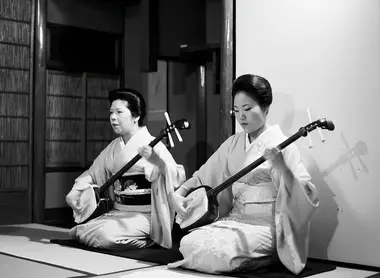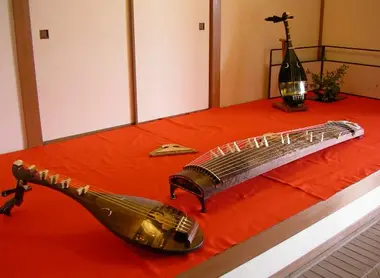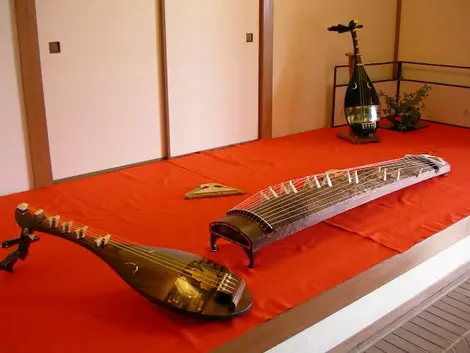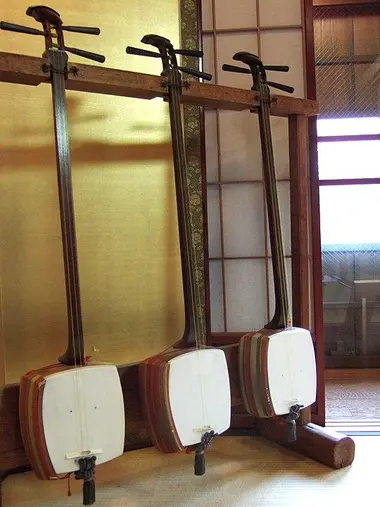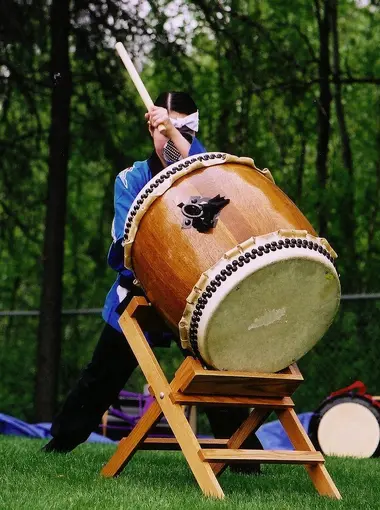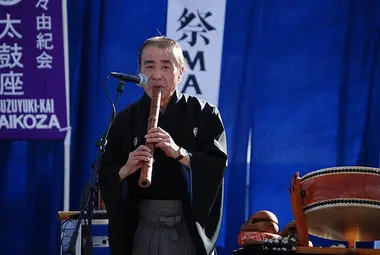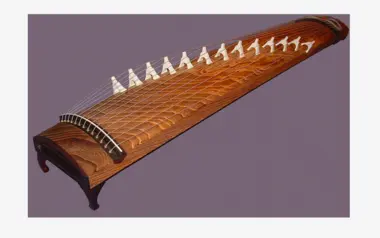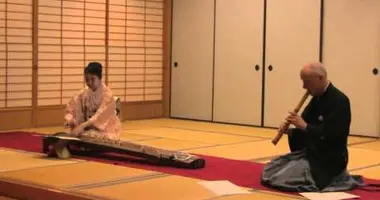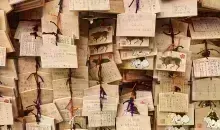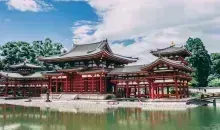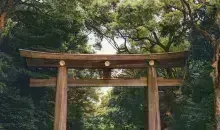Traditional Japanese musical instruments 和楽器
- Publicado el : 28/09/2019
- Por : C.V / J.R.
- Youtube
Mélodies japonaises : 5 instruments emblématiques
La musique asiatique et tout particulièrement japonaise possède des histoires et des sonorités propres. Le pays du Soleil levant est riche en instruments de musique traditionnels, ayant traversé les siècles jusqu'à nous et qui participent à son identité et sa culture. Découvrez cinq instruments de musique traditionnels qui ont rythmé l'histoire de l'archipel japonais.
Japanese traditional music
Historically, Japan is a country of sophistication in both art and culture. The Court also appears to music there since the 5th century. It has always been closely linked to shows and events, such as theater, dance, or festivities. There are several genres of traditional music, such as gagaku, traditional court music, noh (linked to noh theater and comprising several sub-genres), joruri (narrative music), or even nagauta, used for kabuki.
The archipelago thus has many musical instruments specific to the country, which give the very identity of Japanese music. Let yourself be carried away by Japanese musical notes through the history of 5 musical instruments ...
Iconic Japanese musical instruments
Shamisen (三味 線)
With its great richness of timbre, the shamisen ("three scented strings"), is a plucked string instrument.
Derived from a Chinese musical instrument, the sanxian, the shamisen is very present in the art of Japanese performance. It gives rhythm to the pieces of Bunraku, Kabuki and becomes the flagship instrument of the geishas.
The introduction of the shamisen to the Japanese archipelago dates back to the 16th century in Okinawa, ie the beginning of the Edo period (1603-1868).
This small lute with a long and thin neck is made of three nylon or silk strings. The resonance box, square in shape, is traditionally made of sandalwood and covered with taut skin ... formerly of cat, dog, or snake as FiberSen (and a new synthetic skin called Ripple) has replaced the old practice.
This string instrument measuring between 1m and 1.50m is often compared with the American banjo.
Biwa (琵琶)
Short-necked, four-stringed lute with a shallow, rounded body, the biwa is the instrument of choice for the goddess of music and poetry, Benzaiten. It was introduced in the 8th century with the arrival of Chinese influences, and its style evolve over the ages. The melody of the biwa has long accompanied tales of war. It has now become a rare and expensive traditional instrument, due to its sharp construction: it is carved from a single piece of wood and its mastery requires many years of practice ...
This instrument gave its name to Lake Biwa, the largest lake in Japan, due to the resemblance of the shape of the lake to its silhouette.
Taiko (太 鼓)
The term taiko encompasses a wide range of percussion instruments, the size, and style of which may vary depending on the region. The word taiko simply means "drum" in Japanese.
Already represented on the haniwa - terracotta figurines in the tombs of the Kofun period (250-538) - the incredible power of taiko or wadaiko ("Japanese drum") - was used to mark the pace of troops during battles, then for Noh theater performances and traditional festivals.
Since the 20th century, taiko is a Japanese instrument best known internationally, where it is practiced. Nowadays, it is not uncommon to see and hear taiko during matsuri. The practice of taiko requires a lot of energy and movements, which is why it is often considered in Japan as a martial art or a dance.
Shakuhachi (尺八)
First used for Gagaku or "court music" - in the 13th century, shakuhachi becomes the religious instrument reserved only for monks. Designed in bamboo, this long straight flute of about 50cm has 5 holes and a beveled edge. It produces a sound very representative of Japanese tones.
Later, the shakuhachi became very popular and frequently used for solos, or alongside the koto and shamisen. We can even find the shakuhachi in contemporary music.
Koto (琴)
The koto entered the Japanese Imperial Court during the Nara period (710-794). The instrument, somewhat bulky, is a long zither with plucked strings of nearly 2 meters, placed horizontally. It is possible to play this instrument while sitting or standing. The strings, 13 in number, are made of silk and are plucked with scrapers. There are now variations of the koto, especially with more strings, or smaller sizes.
Nicknamed "Japanese harp", the lyrical sound of the koto mixes with shamisen, shakuhachi, and percussions, to accompany the pieces of Bunraku or Kabuki.
To the ear, what does it look like? Discover the combined tones of koto and shakuhachi in this video:
